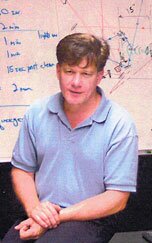TAKE ACTION
Apply for a REAP apprenticeship via the AEOP website.
After applying, contact Irene O’Mara (REAP Director) at (603) 228-4530 or email her at
Frequently Asked Questions
What is the purpose of REAP?
1) To motivate students toward a career in science, mathematics, or technology.
2) To expand students' background and understanding of scientific research.
3) To engage students' active participation into the philosophy and objectives of scientific research.
4) To expose students to science experiences not readily available in high school.
5) To introduce students to the real world of research in these fields.
6) To partner students with faculty mentors to support current and future professional growth and development.
How are apprentices chosen? REAP apprentices are selected through a competitive application process and spaces are limited. The minimum qualifications for REAP are as follows:
1) Demonstrated interests in STEM research;
2) Demonstrated potential for a successful career in STEM; and
3) Member of a group historically underserved or underrepresented in STEM as defined by Federal criteria found at below links:
Visit the below website to view a publication of the National Science Foundation, 'Women, Minorities, and Persons with Disabilities in Science and Engineering, 2011." The NSF report, along with critical shortages in DoD and Federal research laboratories influences the eligibility criteria for REAP applicants.
http://www.nsf.gov/statistics/wmpd/pdf/nsf11309.pdf
Criteria applied to the selection of disadvantaged students may be found at the Department of Education, Federal TRIO website.
What does an apprentice do? A REAP apprentice is expected to exert tangible efforts towards recognizable goals as participating members of a team. They must contribute to the work at hand, understand their contribution and, in general, understand what was accomplished. This is accomplished by training in any or all of the following: scientific method, lab and field research proceedures, specialized equipment use and maintainance, computer programs and so one. All will be done under the direct supervision a mentor. (more on the REAP Apprentice page)
How can a high school become involved? High school teachers and post-secondary institutions should contact Irene O'Mara (Program Director), Academy of Applied Science at (603) 228-4530 or by email at .
Is there a role for alumni in the program? We actively collect information on REAP alumni and are eager to hear about current activities and successes. Please contact Irene O'Mara at (603) 228-4530 or by email at .
Who funds REAP? REAP is funded by grants from the research offices of the U.S. Army. This sponsoring involvement is to ensure availability and improve the quality of people who are qualified and oriented to perform professional and support work in defense life and physical sciences—ultimately increasing the size and improving the quality of the U.S. defense technical community. On occasion, the participating colleges and universities fund apprentices via special scholarship programs.
Who administers REAP? The Academy of Applied Science has administered the Research and Engineering Apprenticeship Program since its inception. The Academy draws on extensive experience in successfully managing and administering youth science programs with a specific focus on science and science research, including the Junior Science and Humanities Symposia Program and the Young Inventors' Program.
How many students benefit from the program each year? About 120 students at over 50 colleges and universities nationwide participate in REAP each year.
How successful is the program? Up to 90% of REAP participants go on to pursue math, science, or technology studies at the post-secondary level.
How long does the apprenticeship last? Anywhere from 5 to 8 weeks, depending on the scope of the program at mentoring institution. Although designed primarily as a summer program, once the student is brought into the program, his/her progress and association with the sponsoring institution will be encouraged on a continuing basis, hopefully through college as he/she becomes eligible for other programs such as co-ops or internships. The program at the institution may be continued through the winter as an after-school job to ensure that the apprentice's motivation is maintained.
Is the apprentice paid? Apprentices are paid a stipend for their research experience. The mentor has the discretion to use his/her portion of the grant funds to pay other research assistants for services rendered in accomplishing the program.
What is the criteria for mentor involvement? Where practicable, the mentor will be a person whose primary duties are hands-on bench work so that the apprentice interfaces continually with the mentor. The mentor's situation should be one in which there is a significant amount of time spent in actually doing the research/engineering that the apprentice can observe, assist where practicable and be taught at the same time. Each mentor should be involved in the apprentice selection process and make the final decision on who will be accepted. An institution may be awarded more than one grant and, accordingly, a mentor may oversee more than one apprentice. The appropriateness of specific mentors is a critical element to program success. (more on the REAP mentor page)
If you have a strong interest in the STEM careers, a REAP apprenticeship can be a powerful, direction-defining experience. We encourage you to apply via the AEOP website.


